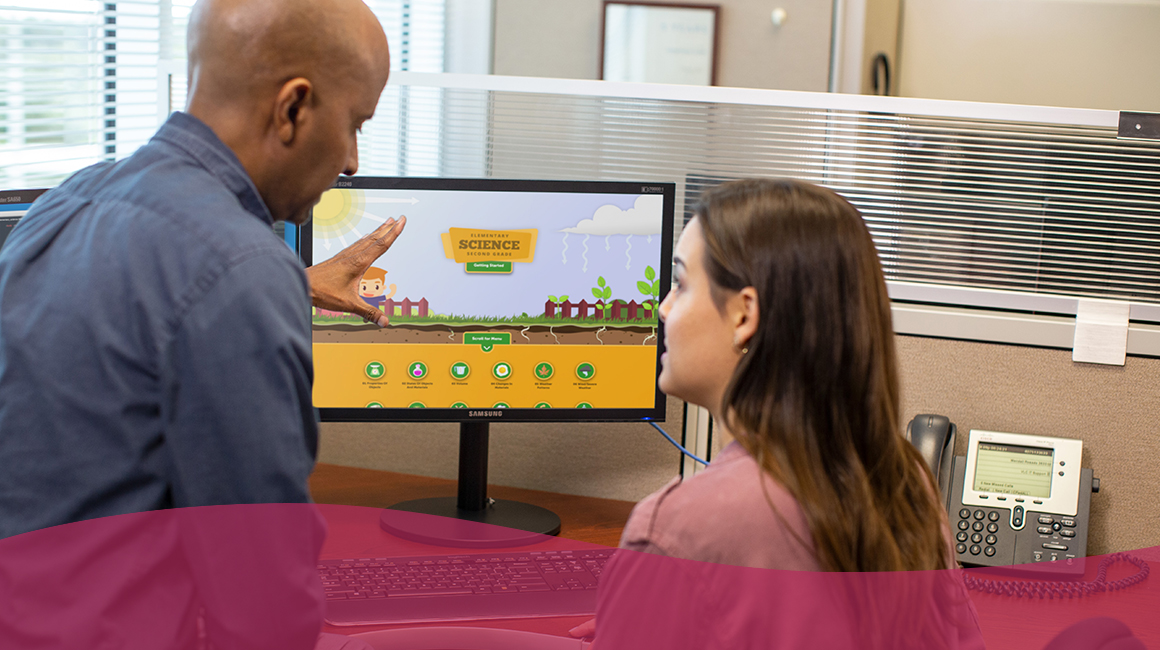The Truth About Digital Curriculum: Quality Counts
The Truth About Digital Curriculum: Quality Counts
By: Misty Mizzoni and Amy Heflin, Senior Managers of Curriculum Development, FlexPoint Education Cloud

“Our lessons, units, and courses should be logically inferred from the results sought, not derived from the methods, books, and activities with which we are most comfortable. Curriculum should lay out the most effective ways of achieving specific results. In short, the best designs derive backward from the learnings sought.” - Grant Wiggins and Jay McTighe
As curriculum developers at FlexPoint, we’re often asked, “What does a quality digital curriculum look like? What are the key pillars that make a comprehensive and engaging digital course?” In their award-winning book, “Understanding by Design,” Grant Wiggins and Jay McTighe outline a curriculum framework that focuses on the benefits of backward planning. We wanted to highlight the quote above because it is where we always start when developing curriculum: with the end in mind.
By starting with the learning outcomes that align with what students need to know and do at the end of a lesson or course, we’re able to design the path students must take to achieve those goals in an intentional and deliberate manner. Our objective is to develop comprehensive digital courses that allow students to engage with their lessons and show mastery of the content. We want students to learn, but we also want them to be excited and passionate about the work they’re doing.
Throughout our education careers, which each span more than 25 years, we’ve learned what high-quality digital courses look like. If you’re a school or district leader who has ever contemplated whether digital curriculum is right for your students, we want to share some insights we’ve learned along the way.

Curriculum Development

Curriculum Development
What Quality Digital Curriculum Looks Like
We believe five key pillars define high-quality digital courses. Rigorous digital courses must be rooted in standards, designed with specific audiences in mind, data-driven, accessible, and continuously refined. Let’s dive deeper into each pillar.
Rooted in Standards
As previously mentioned, we always begin with the outcomes we want students to understand at the end of the course, which align to academic standards. When digital courses are aligned to standards with carefully designed scopes and sequences that scaffold learning toward clearly outlined objectives, the courses ensure that students and educators are accountable for achieving the learning goals.
Our FlexPoint curriculum team takes this work very seriously, and in addition to aligning our courses with state standards, as well as national standards, where applicable, we also work with schools individually to learn what they need to garner high student performance outcomes. Our courses also undergo thorough review and testing, both during development and after completion. This is critical in ensuring our courses have fidelity.
Designed with the Student Audience in Mind
It’s imperative that digital curriculum is developed with an understanding of how students and teachers will interact with it. We do this by asking our students, families, and teachers questions such as:
- What kind of support do our students have at home? Will they need someone to help guide them?
- How do students best learn? Are they visual, kinesthetic, auditory, or read/write learners?
- How can we support our instructional teams to work with their curriculum and maximize student learning?
Once we have the answers to these questions, we think through course design. For example, some students may be visual and learn better with video lessons, and others may just want to read the material because it’s quicker than watching a video. Having different options throughout courses ensures that every student can engage with and master the information.
Ideally, every digital course design should be different because every school subject is different. For example, when developing world language courses we add more video content to help with student comprehension, as well as a tool that allows students to record themselves, listen to their pronunciation, and receive immediate feedback in the language they’re learning. We architect courses individually with student needs at the forefront. As a result, no two courses are the same.
Data-Driven
Strong curriculum pedagogy is data-driven. It enables educators to progress monitor student performance and constantly improve processes in response to the data received. For example, is there a quiz or assignment in a digital course that all students struggle with? If so, why? Is it a difficult topic, is there a question that could be worded better, or maybe the instructions aren’t clear? Digital curriculum should be easy to refine and tweak if something in the course isn’t resonating or hitting the mark with your students.
Accessible
High-quality digital curriculum should be accessible to all learners, regardless of their ability. For the online learning community, it’s critical that web accessibility is a priority to ensure all students have equal access to information and functionality. All students include, but are not limited to, those with impairments - either temporary, permanent, or situational - that affect vision, hearing, mobility, cognition, and speech. For digital courses to be successful, they need to have built-in accessibility features such as closed captioning, audio descriptions, and more.
An inclusive design approach to developing digital curriculum benefits everyone. For example, some students must use text-to-speech tools to gather information, but there are also those who like to use text-to-speech to obtain information based on a circumstance, such as wanting to play video games while listening to a book or PDF.
Continuously Refine
Digital curriculum is agile and can be adjusted quickly, if needed. Our curriculum team has a continuous improvement model that allows us to refine and maintain our digital courses with key insights from our students, families, and teachers.
As students and teachers begin to interact with our courses, they provide feedback on any issues that arise, lessons that need to be tweaked, and what is most engaging. We do this through focus groups, surveys, and “think tanks.” One of our most successful “think tanks” occurs quarterly with our students in elementary, middle, and high school. We discuss different topics each quarter and the students have the opportunity to provide genuine feedback. And trust us when we say, they don’t hold back.
Make Your List of Non-Negotiables
If you’re a school or district administrator researching curriculum providers, we recommend prioritizing these five key pillars. We like to compare this to buying a house. When you buy a house, you make a list of features that your house must have (the non-negotiables).
For example, perhaps you need at least two bathrooms, a backyard, and an open floor plan. You should also have a list of items that you are willing to compromise on - like having a pool, fireplace, or an office. It is important to know your priorities and stick to them because with many options available, you want to ensure you’re choosing the best curriculum for your students and teachers.
We hope this article helps you better understand what true quality digital curriculum looks like. In the next few months, we’ll cover questions school and district leaders should ask curriculum providers if they're looking to purchase digital courses, but in the meantime, learn more about FlexPoint digital curriculum by visiting our website.